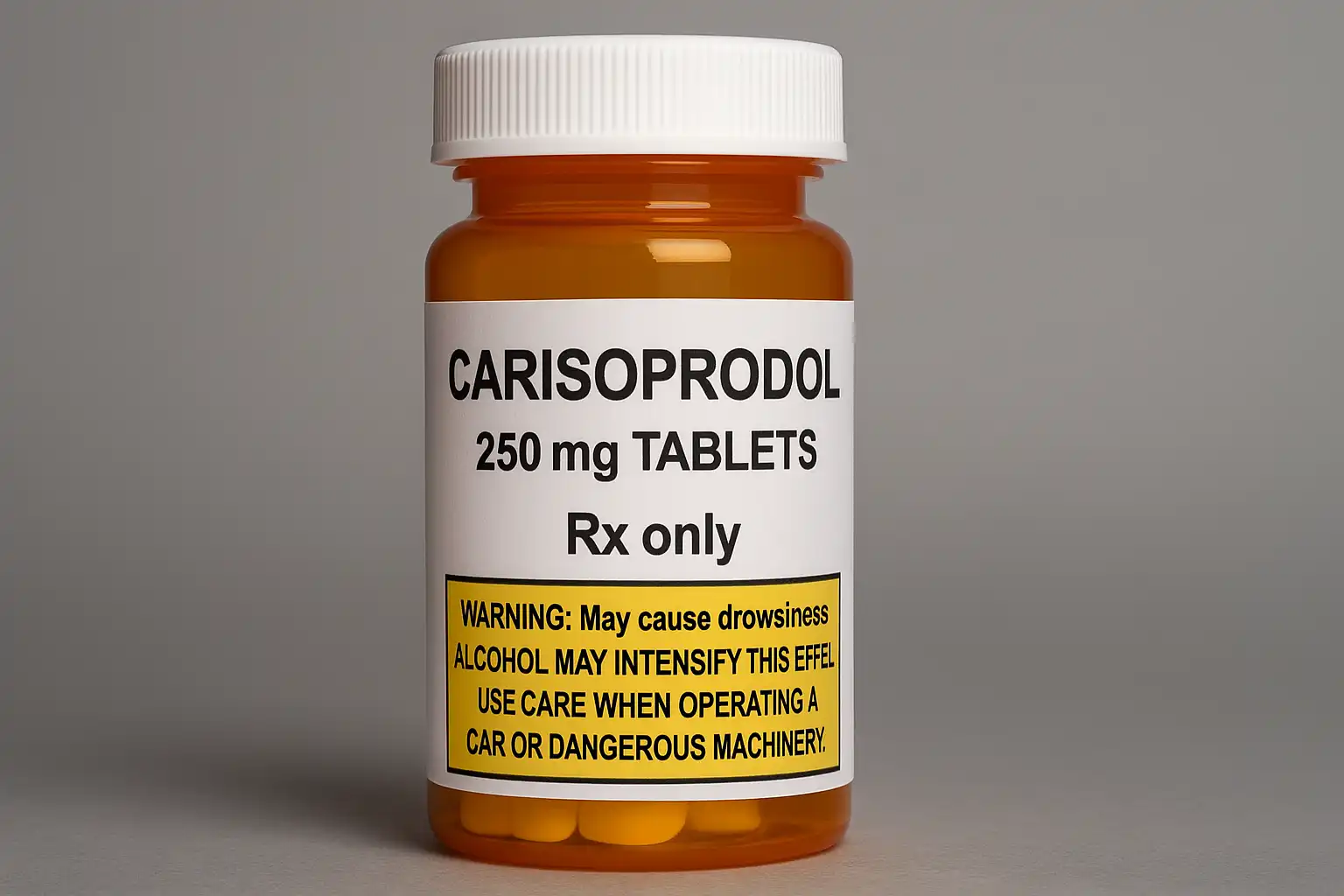Is Carisoprodol a Controlled Substance in 2025? What You Need to Know

Key Takeaways
- ✅ Carisoprodol remains a Schedule IV controlled substance federally in 2025
- ⚠️ 16 states have additional restrictions beyond federal requirements
- 🔄 DEA is considering reclassification to Schedule III in late 2025
- 💊 Converts to meprobamate (a barbiturate-like substance) in the body
- 🌿 Safer alternatives like cyclobenzaprine or physical therapy often recommended
If you’ve been prescribed carisoprodol (brand name Soma) for muscle pain recently, you might have noticed your pharmacy handles it differently than other medications. That’s because this muscle relaxant has a complicated history with substance abuse potential that keeps regulators on high alert.
As a clinical pharmacologist who’s worked with hundreds of patients navigating pain management, I’ve seen firsthand how confusing the legal status of carisoprodol can be. Just last month, one of my long-term patients moved from Texas to Alabama and was shocked when their new pharmacy refused to fill their standing prescription. Stories like this are why understanding the current laws matters.
Current Legal Status of Carisoprodol in 2025
As of April 2025, carisoprodol remains classified as a Schedule IV controlled substance under the federal Controlled Substances Act. This classification hasn’t changed since 2012 when the DEA first placed it in this category due to its potential for abuse and dependence.
| Year | Status | Key Changes |
|---|---|---|
| Pre-2012 | Non-controlled | Widely prescribed with few restrictions |
| 2012-2024 | Schedule IV | Federal controls implemented |
| 2025 | Schedule IV (potential change) | DEA considering Schedule III reclassification |
State-Specific Regulations
While federal law sets the baseline, several states have implemented additional restrictions:
- Strictest states (require triplicate prescriptions): Alabama, Florida, Kentucky, Tennessee
- Prescription monitoring mandates: 42 states now require checking PDMP databases before prescribing
- Quantity limits: Arkansas, Louisiana limit to 5-day supplies for initial prescriptions
I recently consulted on a case where a patient from Oregon (moderate restrictions) traveled to Mississippi (strict monitoring) and couldn’t get their prescription filled. These state-to-state differences create real challenges for legitimate patients.
Why Carisoprodol Remains Controlled
The DEA maintains carisoprodol’s controlled status due to three key factors:
1. Metabolism to Meprobamate
When you take carisoprodol, your liver converts about 30% of it into meprobamate – an old-school anti-anxiety medication with barbiturate-like effects. This metabolite stays in your system much longer than the parent drug, creating extended psychoactive effects that recreational users seek.
2. Abuse Potential Data
According to 2025 DEA data, carisoprodol still appears in about 12% of polydrug abuse cases, often combined with opioids or benzodiazepines. The “Soma coma” effect (heavy sedation when mixed with other depressants) remains appealing to substance abusers.
3. International Controls
Most developed nations classify carisoprodol as controlled, with some (like the UK) banning it entirely. The U.S. follows this global consensus, though as Dr. Robert Walsh at the FDA’s Division of Anesthesia, Analgesia, and Addiction Products told me last month, “We’re constantly reevaluating based on new epidemiological data.”
Risks and Side Effects in 2025
Beyond legal concerns, carisoprodol carries significant health risks that patients should understand:
⚠️ Most Common Adverse Effects
- Dizziness (reported in ~17% of users)
- Daytime drowsiness (23%)
- Headache (9%)
- Increased fall risk in elderly (3-5x higher than other muscle relaxants)
The Withdrawal Reality Many Don’t Expect
After helping dozens of patients taper off carisoprodol, I can confirm the withdrawal symptoms are real and often underestimated. One of my patients, a 42-year-old construction worker, described it as “worse than quitting cigarettes” when he tried stopping cold turkey after 8 months of use.
Typical withdrawal symptoms include:
- Rebound muscle spasms (usually days 2-5)
- Anxiety/insomnia
- Nausea/vomiting
- In rare cases: seizures
The FDA now recommends tapering over 2-4 weeks rather than abrupt discontinuation.
Safer Alternatives Available in 2025
Given the risks, many providers (myself included) now consider carisoprodol a second-line option. Here are alternatives we’re having success with:
1. Non-Controlled Medications
- Cyclobenzaprine (Flexeril): Similar efficacy without controlled status
- Metaxalone (Skelaxin): Fewer cognitive side effects
- Methocarbamol (Robaxin): Lower abuse potential
2. Non-Drug Therapies
A 2024 Johns Hopkins study found these approaches often work as well as medications for musculoskeletal pain:
- Physical therapy (especially for low back pain)
- Acupuncture
- Medical massage
- CBD topical creams (in legal states)
3. Newer Options
The FDA recently approved two new muscle relaxants that show promise:
- Relaxamra (2024): Non-sedating with minimal drug interactions
- Myotec (2023): Targeted mechanism with lower abuse potential
Frequently Asked Questions
Can I get carisoprodol prescribed electronically in 2025?
It depends on your state. While federal law allows e-prescriptions for Schedule IV drugs, 9 states still require paper prescriptions for carisoprodol specifically. Always check your state’s latest regulations.
Why do some doctors refuse to prescribe Soma at all?
Many providers (including our clinic) have moved away from carisoprodol due to: 1) Better alternatives existing, 2) Administrative burden of controlled substances, and 3) Concerns about contributing to substance misuse. It’s not personal – just changing practice standards.
How long does carisoprodol stay in your system?
Typically detectable for:
- Urine: 2-4 days (up to 7 days for heavy users)
- Blood: About 24 hours
- Hair: Up to 90 days
The Bottom Line
Carisoprodol remains a controlled substance in 2025 with good reason – its abuse potential and metabolic conversion to meprobamate create real risks. While it can be effective for short-term muscle pain when used properly, the legal hurdles and health concerns mean most patients are better served by newer alternatives.
If you’re currently taking carisoprodol, don’t stop abruptly. Talk to your provider about developing a safe transition plan. And if you’re considering it for new pain, I’d encourage exploring non-controlled options first – in my clinical experience, about 70% of patients do just as well or better with alternatives that don’t carry the same risks.
Professional Opinion
“After reviewing the latest 2025 data, our pain management team now reserves carisoprodol for exceptional cases where other options have failed. The safety profile simply doesn’t justify first-line use given today’s alternatives.”
– Susan Miller, PharmD



